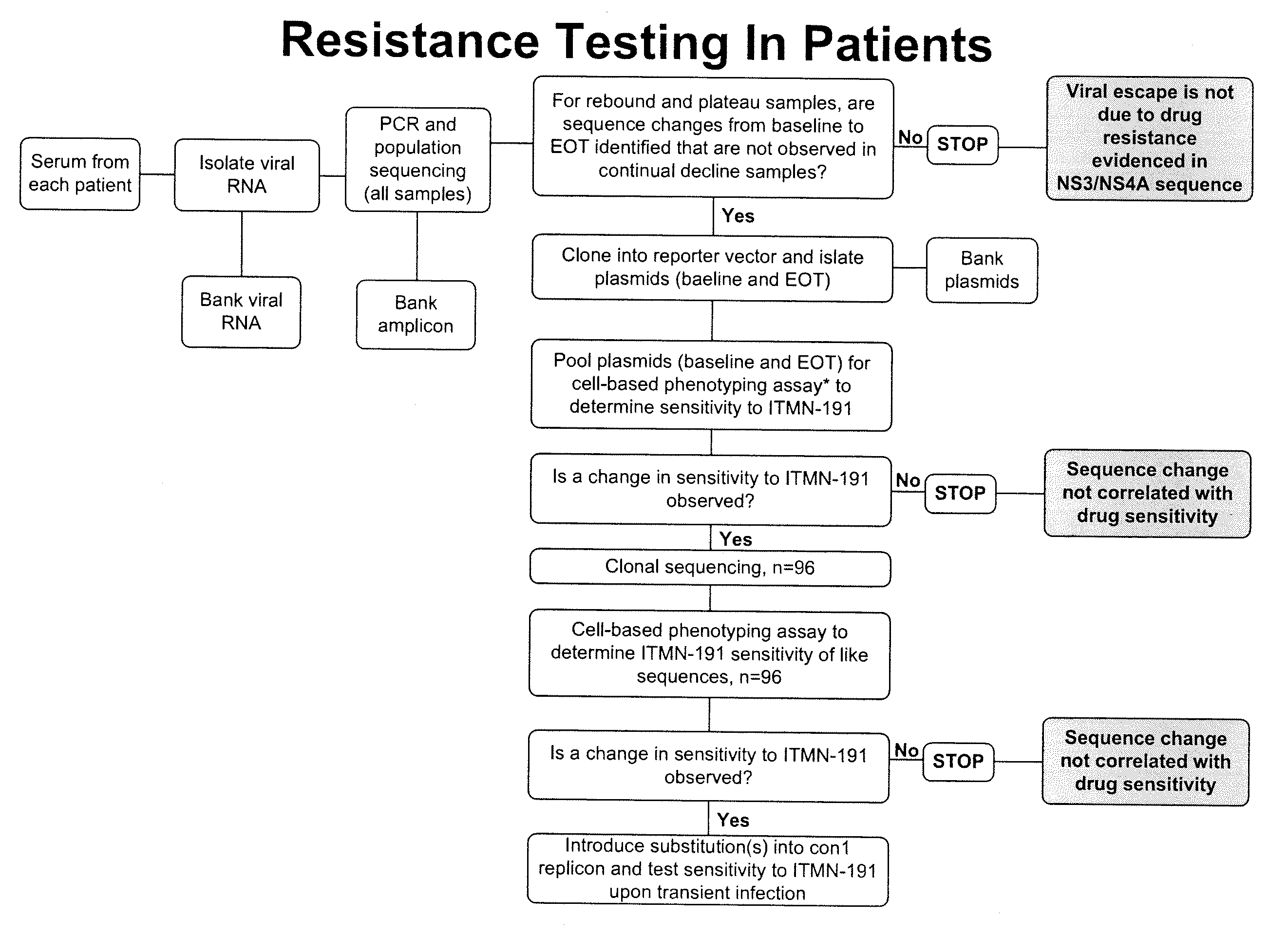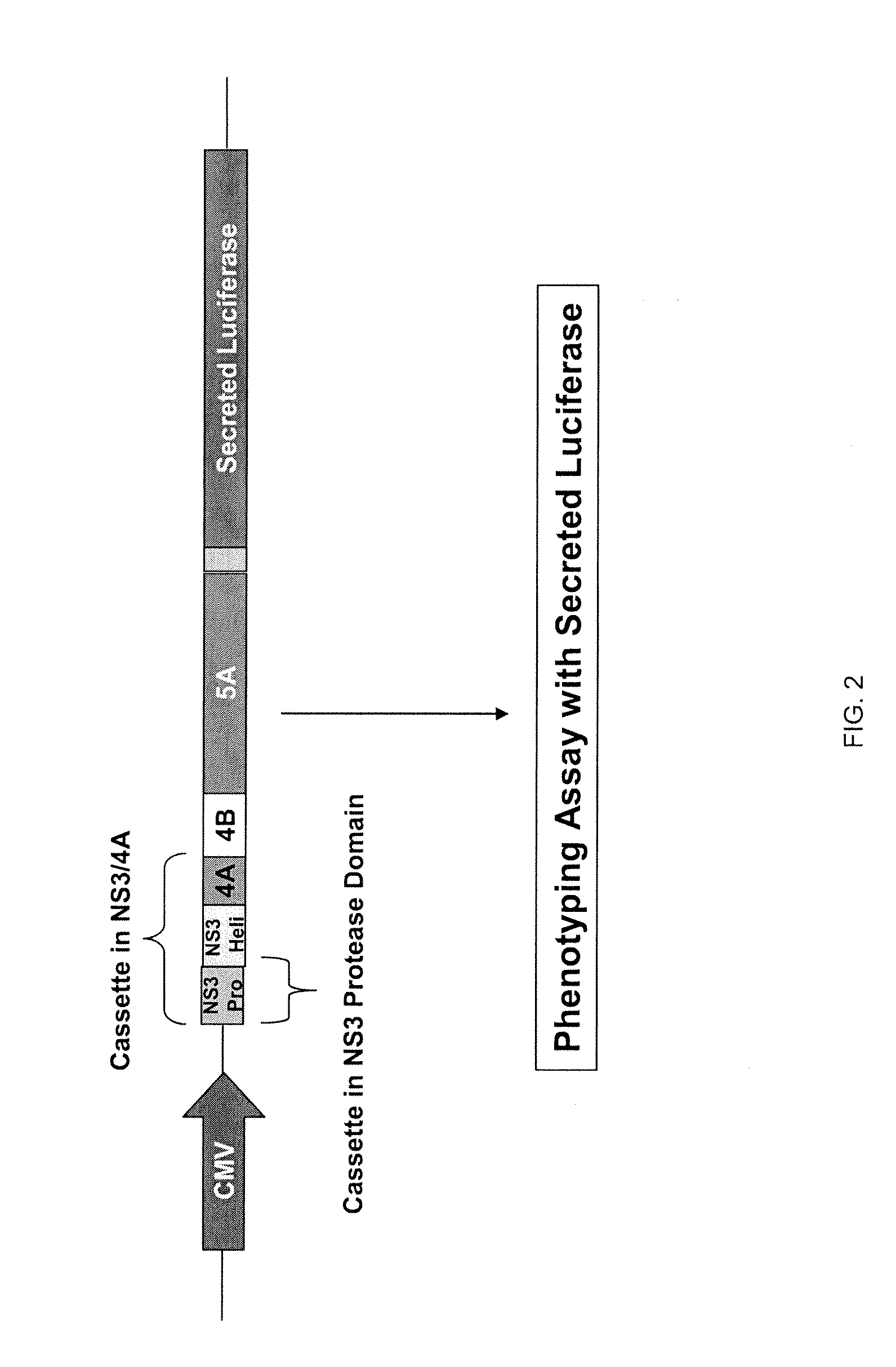Hcv genotyping and phenotyping
a technology of hcv and phenotyping, applied in the field of hcv genotyping and phenotyping assays, can solve the problems of prolonged regimen, increased risk of liver cirrhosis and hepatocellular carcinoma of subjects with chronic hepatitis, and inability to tolerate well, so as to reduce or minimize non-specific background noise. the effect of signal
- Summary
- Abstract
- Description
- Claims
- Application Information
AI Technical Summary
Benefits of technology
Problems solved by technology
Method used
Image
Examples
example 1
HCV NS3 Domain Degenerate Primer Design
[0163]Primers preferably capable of annealing to both HCV genotypes 1a and 1b were designed to amplify the HCV NS3 region. To design the primers, published HCV Genotype 1 (mostly 1a and 1b) sequences were collected and aligned to identify regions with a high degree of homology. The appearance frequency of each nucleic acid within a homology region was calculated. A cut-off frequency percentage can be assigned to keep the degeneracy of the designed primer in an acceptable range. Another considering factor in designing the degenerate primer is to try to keep the 5 nucleic acids at most 3′ end free of degeneracy.
example 2
Amplifying HCV NS3 Domain
[0164]Viral RNA was isolated from clinical samples and the HCV NS3 domain was amplified using first and second round degenerate primers. The region of HCV amplified is shown in FIG. 7. FIG. 7 shows the regions where reasonable homology was identified. As indicated, “U” represents an upstream primer and “D” represents a downstream primer, with the numbers corresponding to the Con-1 position for the 5′ end of the homologous region. The second round primers, U3420 and D4038, carry restriction sites for cassette cloning into a phenotyping vector. U3420 also has the start codon and kozac sequence for protein translation. FIGS. 8-11 show the amino acid conservation among genotype 1 isolates in primers U3276, D4221, U3420, and D4038, respectively.
example 3
HCV Genotype Testing with Clinical Samples
[0165]Clinical isolates were obtained from multiple sources including hospital, clinical lab and commercial entities.
[0166]The results of phenotyping patient NS3 clones is shown in FIG. 13. The three amplified clinical samples shown in FIG. 12 were cloned into the phenotyping vector and characterized by phenotyping assay.
[0167]FIG. 14 shows the sequences of genotype 1a / b specific non-degenerate primers. FIG. 15 shows the products that resulted from PCR amplification using genotype 1a / b specific non-degenerate primers. The PCR products were cleaned and the population was sequenced. Sequencing results revealed that they are HCV 1a or 1b sequences.
PUM
| Property | Measurement | Unit |
|---|---|---|
| Fraction | aaaaa | aaaaa |
| Fraction | aaaaa | aaaaa |
| Fraction | aaaaa | aaaaa |
Abstract
Description
Claims
Application Information
 Login to View More
Login to View More - R&D
- Intellectual Property
- Life Sciences
- Materials
- Tech Scout
- Unparalleled Data Quality
- Higher Quality Content
- 60% Fewer Hallucinations
Browse by: Latest US Patents, China's latest patents, Technical Efficacy Thesaurus, Application Domain, Technology Topic, Popular Technical Reports.
© 2025 PatSnap. All rights reserved.Legal|Privacy policy|Modern Slavery Act Transparency Statement|Sitemap|About US| Contact US: help@patsnap.com



